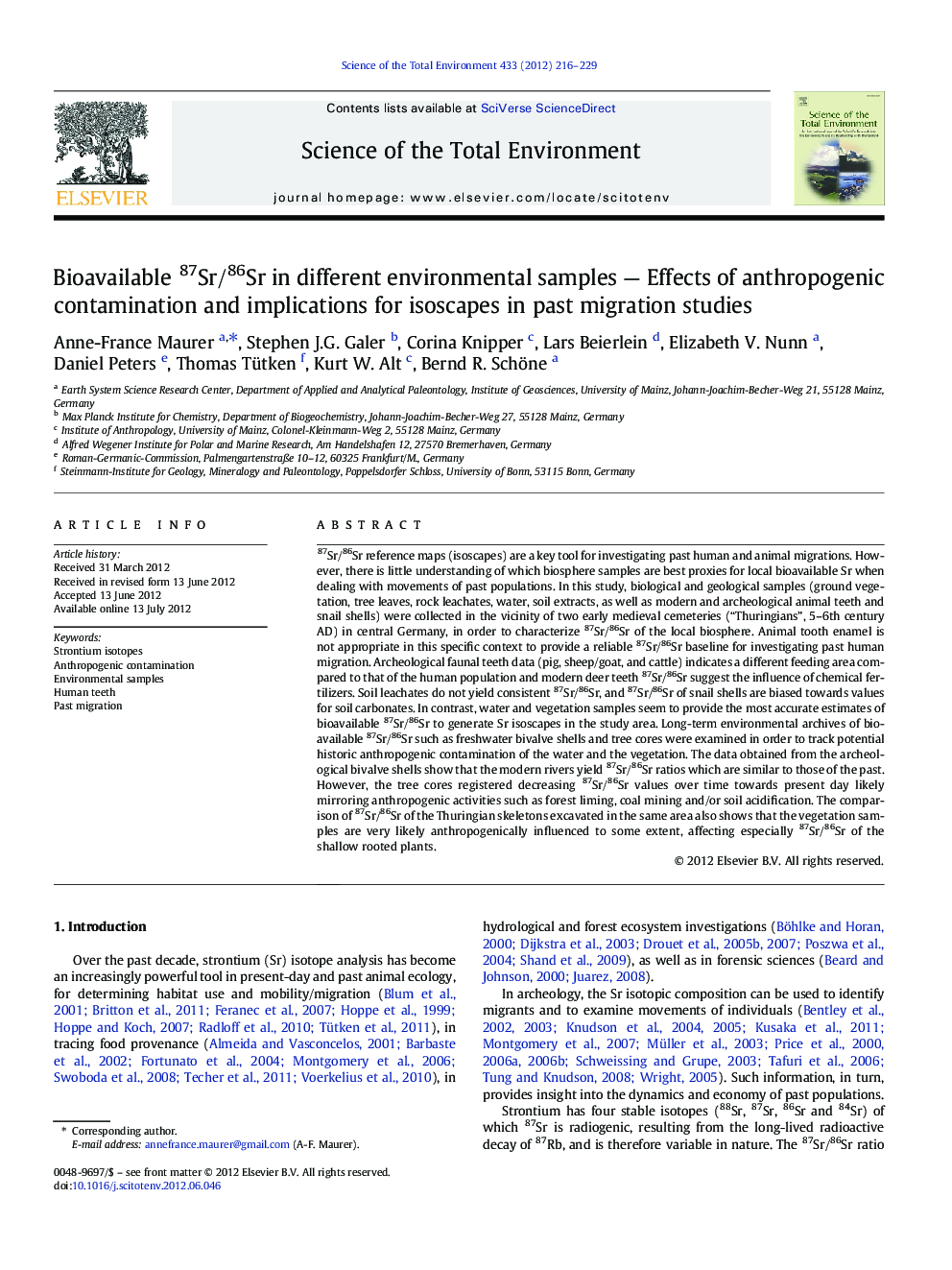| کد مقاله | کد نشریه | سال انتشار | مقاله انگلیسی | نسخه تمام متن |
|---|---|---|---|---|
| 6334026 | 1619819 | 2012 | 14 صفحه PDF | دانلود رایگان |

87Sr/86Sr reference maps (isoscapes) are a key tool for investigating past human and animal migrations. However, there is little understanding of which biosphere samples are best proxies for local bioavailable Sr when dealing with movements of past populations. In this study, biological and geological samples (ground vegetation, tree leaves, rock leachates, water, soil extracts, as well as modern and archeological animal teeth and snail shells) were collected in the vicinity of two early medieval cemeteries (“Thuringians”, 5-6th century AD) in central Germany, in order to characterize 87Sr/86Sr of the local biosphere. Animal tooth enamel is not appropriate in this specific context to provide a reliable 87Sr/86Sr baseline for investigating past human migration. Archeological faunal teeth data (pig, sheep/goat, and cattle) indicates a different feeding area compared to that of the human population and modern deer teeth 87Sr/86Sr suggest the influence of chemical fertilizers. Soil leachates do not yield consistent 87Sr/86Sr, and 87Sr/86Sr of snail shells are biased towards values for soil carbonates. In contrast, water and vegetation samples seem to provide the most accurate estimates of bioavailable 87Sr/86Sr to generate Sr isoscapes in the study area. Long-term environmental archives of bioavailable 87Sr/86Sr such as freshwater bivalve shells and tree cores were examined in order to track potential historic anthropogenic contamination of the water and the vegetation. The data obtained from the archeological bivalve shells show that the modern rivers yield 87Sr/86Sr ratios which are similar to those of the past. However, the tree cores registered decreasing 87Sr/86Sr values over time towards present day likely mirroring anthropogenic activities such as forest liming, coal mining and/or soil acidification. The comparison of 87Sr/86Sr of the Thuringian skeletons excavated in the same area also shows that the vegetation samples are very likely anthropogenically influenced to some extent, affecting especially 87Sr/86Sr of the shallow rooted plants.
⺠Natural modern deer teeth 87Sr/86Sr is lowered by the use of fertilizers. ⺠River water 87Sr/86Sr did not change over 2000 years. ⺠Soil leachates and snail shells may not provide reliable bioavailable 87Sr/86Sr. ⺠Vegetation 87Sr/86Sr is affected by anthropogenic activities to some extent.
Journal: Science of The Total Environment - Volume 433, 1 September 2012, Pages 216-229